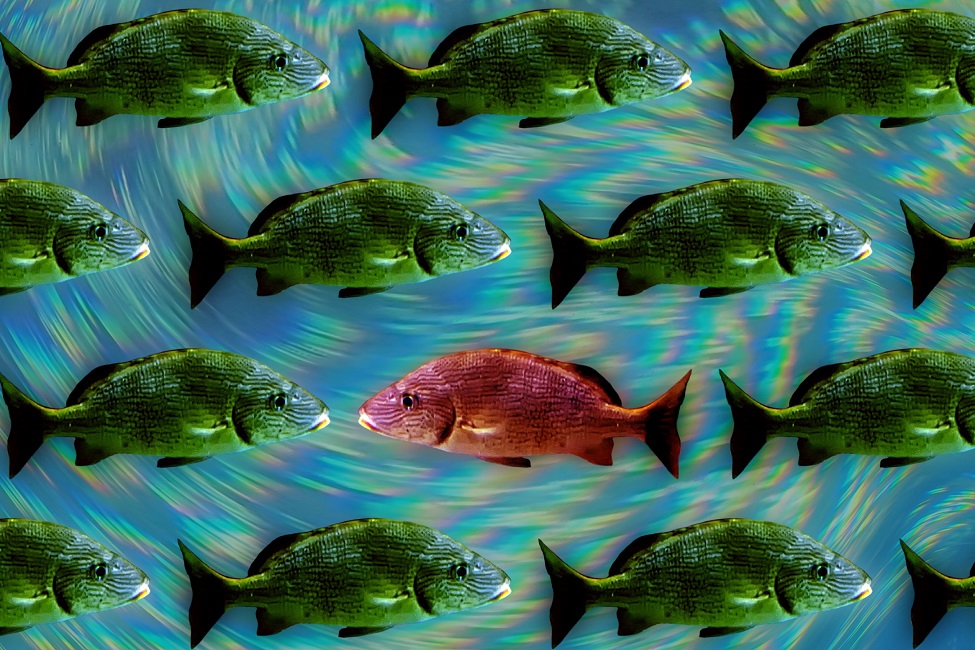
For wild animals, bogus alarms are the most widespread type of misinformation. (Photograph credit: Kaylee Rose Fahimipour)
Irrespective of the rewards of understanding about the earth by way of social ties, social connections also give a conduit for misinformation that impedes powerful final decision-generating.
For wild animals, phony alarms are the most popular form of misinformation. For instance, when an particular person animal in a team tends to make the selection to make an alarm signal or initiate an escape maneuver in the absence of a actual risk. This first motion makes sensory stimuli that can be perceived by other folks in the group as an indication of risk, resulting in a cascade of faulty escape responses that can unfold contagiously.
Behavioral and neurophysiological scientific tests propose that reasonably straightforward behavioral procedures management choice-building in quite a few of these options. Nevertheless, it is mysterious whether these strategies somehow account for the probability of exposure to misinformation.
To tackle this query, scientists from Florida Atlantic University, Cornell University and the University of Colorado Boulder deployed digicam observatories in a coral reef in French Polynesia to consistently document behavioral final decision-producing of wild, combined-species groups of foraging fish. For the study, they analyzed the video clip recordings to examine how personal determination-generating has an effect on the distribute of misinformation. To fully grasp why, the scientists reconstructed the visible sensory facts accessible to each individual fish in advance of and all through escape occasions, and modeled the fish’s conclusion-generating procedures to respond or not answer.
Benefits, printed in the
Proceedings of the Countrywide Academy of Sciences, counsel that even in the absence of predators, escape activities happen often in organic groups of foraging fish but hardly ever distribute to extra than a number of people today. These animals create and perceive visible motion cues produced by others, thereby forming dynamic details trade networks.
“These networks are shockingly sturdy to untrue alarms that take place when 1 unique flees in the absence of a legitimate shared risk,” reported Ashkaan Fahimipour, Ph.D., corresponding creator, and an assistant professor in the Division of Biological Sciences
in FAU’s Charles E. Schmidt School of Science. “By reconstructing visible sensory inputs to each individual animal, we clearly show that this robustness to misinformation about threats inherits from a precise assets of their selection-creating system: dynamic changes in sensitivity to socially obtained information and facts. This house can be realized through a basic and biologically common determination-earning circuit.”
In fish, escape responses are managed by specialized neural circuits that method incoming sensory stimuli, which includes visible movement stimuli, and route signals to premotor neurons in the hindbrain. For that reason, the scientists hypothesized that organic escape situations are initiated and spread via visible stimuli generated when people in the team move.
Conclusions from this research were inconsistent with prior hypotheses that organisms ordinary or pool the behavioral cues from neighbors to make selections. The researchers propose that fish dynamically altered their responsiveness to visible cues dependent on the current heritage of sensory inputs from neighbors.
In accordance to Fahimipour Andrew M. Hein, Ph.D., corresponding author and an assistant professor of computational biology, Cornell College Michael Gil, Ph.D., an assistant professor at the University of Colorado at Boulder, and the other co-authors, their dynamic selection-making product is extra robust to misinformation and could be attained by a straightforward neural circuit uncovered in several other animals.
“It will be exciting to examine whether or not the mechanisms discovered right here also are important in driving person choice-generating and misinformation spread in other organic and social systems,” Fahimipour.
Fahimipour was supported by the Investigate Associateship Method from the Nationwide Analysis Council of the National Academies of Sciences, Engineering, and Arithmetic. This operate was supported by the Nationwide Science Basis grants (IOS-1855956 and EF-2222478).
https://www.youtube.com/view?v=pApttdXO0-k//
Deploying digicam observatories in a coral reef in French Polynesia, scientists have revealed that even in the absence of predators, escape gatherings manifest often in all-natural groups of foraging fish but almost never unfold to more than a several people today.
-FAU-
